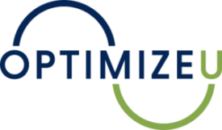How to Flourish in a Large Organization
A former student of mine called the other day. She was one month into her new job at a large organization. She had been energized about her new job when I spoke to her last, just a week before starting the position. She was full of ideas of how she could help the company overcome some of its challenges.
On the call she sounded hesitant and self-doubting. As I asked her more questions, she shared the following with me:
I’m just not certain what I am supposed to be working on. I have two bosses and they have different ideas on what I should be doing. I was hired by the quality control division to work on quality improvement projects within various units in the company. But when I show up each day on the unit I’m currently working in, my unit manager assigns me tasks that have more to do with project management. I don’t know anything about project management so I don’t feel that I have much to contribute. I end up not saying much in meetings. I get caught up in wondering whether I’m making a good first impression.
I had a hunch that larger issues were at play than her competency. As my former student shared more, my hunches were confirmed. She worked for a large, complex organization with a matrix structure. Having worked with leaders there, I have heard that there is very little time for communication and coordination. I was hired to help the leadership team create a positive workplace environment that promoted employee wellbeing and flourishing. Leadership was fully committed to these efforts. Yet some of the more basic organizational and management considerations (e.g., organizational structure, management practices, workflow, job design) were not only diminishing the organization’s productivity, but also depleting employees’ confidence, energy, and peace of mind.
It is hard for any one individual to see how the larger structural elements of an organization (e.g., workflow, onboarding practices, meeting norms) impact our experience within the organization. Leadership is often unaware too because they occupy only one perspective in the organization and have not experienced others’ perspective. (That is, unless they ask.)
The benefit of well designed organizations is that they achieve business objectives by being more efficient, productive and profitable. But they also create ecosystems that make it easier for employees to flourish.
We know from the science of positive psychology what humans need to flourish. Summarized with the acronym PERMA, we flourish when we experience positive emotions, engagement, (positive) relationships, meaning, and achievement. We know from the science of positive organizational scholarship how to design organizations to create opportunities for flourishing.
Reflection Questions for leaders:
- Are your employees flourishing? Do they show signs of PERMA ( positive emotions, engagement, relationships, meaning, and achievement)?
- If not, might there be organizational factors that generate unnecessary stress from uncertainty or misunderstandings? Consider job design, workflow, practices such as how meetings are conducted, or social norms that shape social interactions.
-
Can you create opportunities for employees to experience PERMA throughout their workday?






Leave A Comment